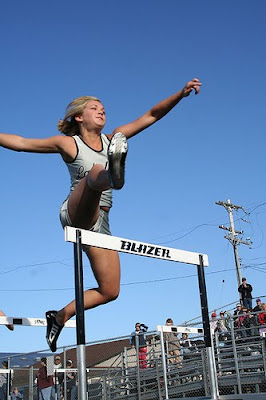
I have had a great week of learning.
Last Friday and Saturday, I attended a Literacy Connection workshop featuring speaker Samantha Bennett. On Tuesday of last week, I was able to attend Ohio's 21st Century Skills Summit. Even though the topics of the two workshops were different (one on workshop and one on 21st Century Skills), they came together in a way that is helping me think through my own work. Both really helped me get my mind back into what matters in education. It is getting harder, as teachers, in this age of testing, to remember the big picture of our work. Both of these workshops helped me to think hard about being more intentional and prioritizing.
One of the speakers I was able to hear at the Ohio Summit was
Christian Long. His talk was on Learning Environments and it was amazing. I had not heard him speak before and was incredibly inspired by his talk. One of the books that he recommended was
THE THIRD TEACHER, which I ordered immediately. I spent this weekend reading the book and I LOVED it. I am so happy to have discovered it. I intend to go back to it over the next few months.
I have been struggling a bit with the environment of the library. I have quickly realized that it is a different kind of challenge to create a community for an entire school population than it is to create a classroom community. Thinking about a space that supports all members of an entire school in different ways has been on my mind this year. Much of my thinking during my last several years in the classroom was about creating an intellectual community in the classroom. So much of my thinking comes from moving beyond merely a feel-good environment for kids, but one where a community can come together as thinkers, learners and doers and how to create that sense for every member. I have been trying to figure out how to use the library resources, time and space to create a similar environment for the entire school community. It is my new big question and this book is helping me begin to think differently about these issues. It is a great book if you are thinking about environment of any kind connected to kids and education. Whether you are thinking about classroom environment, school environment, etc. this book gives you lots to think about.
I have too many sticky notes in the book to begin to tell you about, but the book is filled with so many things to think about in the ways we must change the school environment by thinking about design, if we want to meet our students' needs. Many of the case studies in the book are about schools that were started from scratch or schools that were built with a vision in mind. For me, reading this book was more about thinking through making the best of space that is already there and it gave me lots to think about.
Even though I was thinking a bit about space, this book is about so much more than space. We hear from Howard Gardner in the book, who reminds us, "The actual materials, or layout of the spaces are less important than the provision of ample opportunity to use these intelligences."--The book is about being intentional about the environments we create for children based on what we believe. We hear from experts like Raffi, Ken Robinson and others who each bring a different expertise to the conversation.
Some things in the book that have helped my current thinking:
#14 Multiply Intelligences: Allow students time and space to choose what they want to do-their choices will illuminate their individual strengths."
#15 Post learning: Posting student work, both current and past, up on the walls tracks progress in visible ways.
#23 Make classrooms agile: A learning space that can be reconfigured on a dime will engage different kinds of learners and teachers.
#62 Put the fun in fundamentals: Injecting a learning space with playfulness and humor creates a warm and welcoming atmosphere.
The book explores so many aspects of environment including school lunches, playgrounds and the role of technology in schools today. And the design of the book itself is amazing. It is designed in a way that not only invites you in but gives you so much to think about on every page. The combination of text, quotes, photos and case studies creates a unique read.
So many things that I want to learn more about--projects and people I was introduced to in the book. I want to explore
THE THIRD TEACHER site and blog a bit more and I also want to go back and find the sites for many of the schools and experts that I read about in the book.
This book has just been put on my "must recommend to everyone I know" list. (And I like it so much that I don't think I am going to be able to lend it to anyone--it is one that I want to have with me for a while!) I have read so many good things lately but this one stands out a bit for anyone who wants a way to think through the ways in which the environments we create in schools impact teaching and learning.
 Growing Patterns: Fibonacci Numbers in Nature
Growing Patterns: Fibonacci Numbers in Nature

































